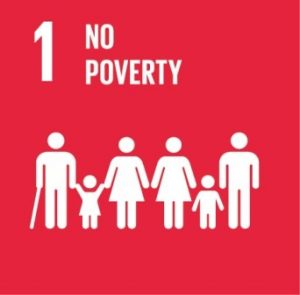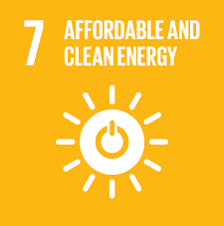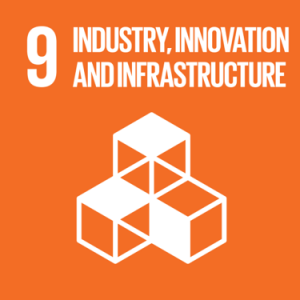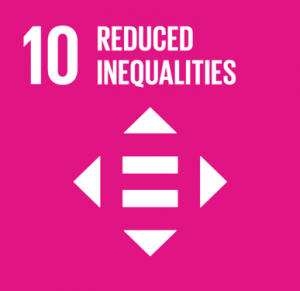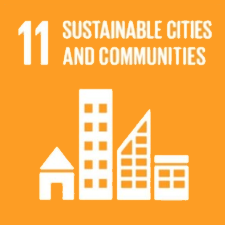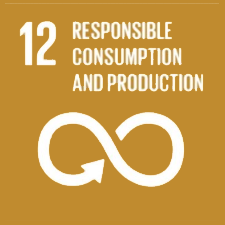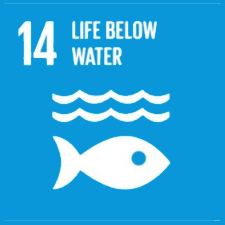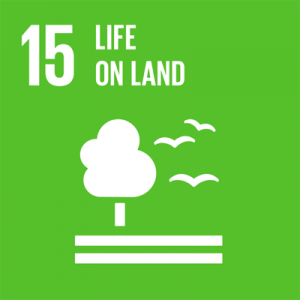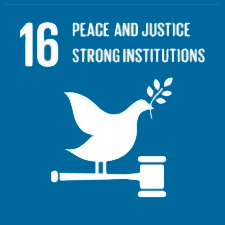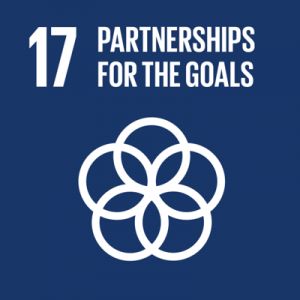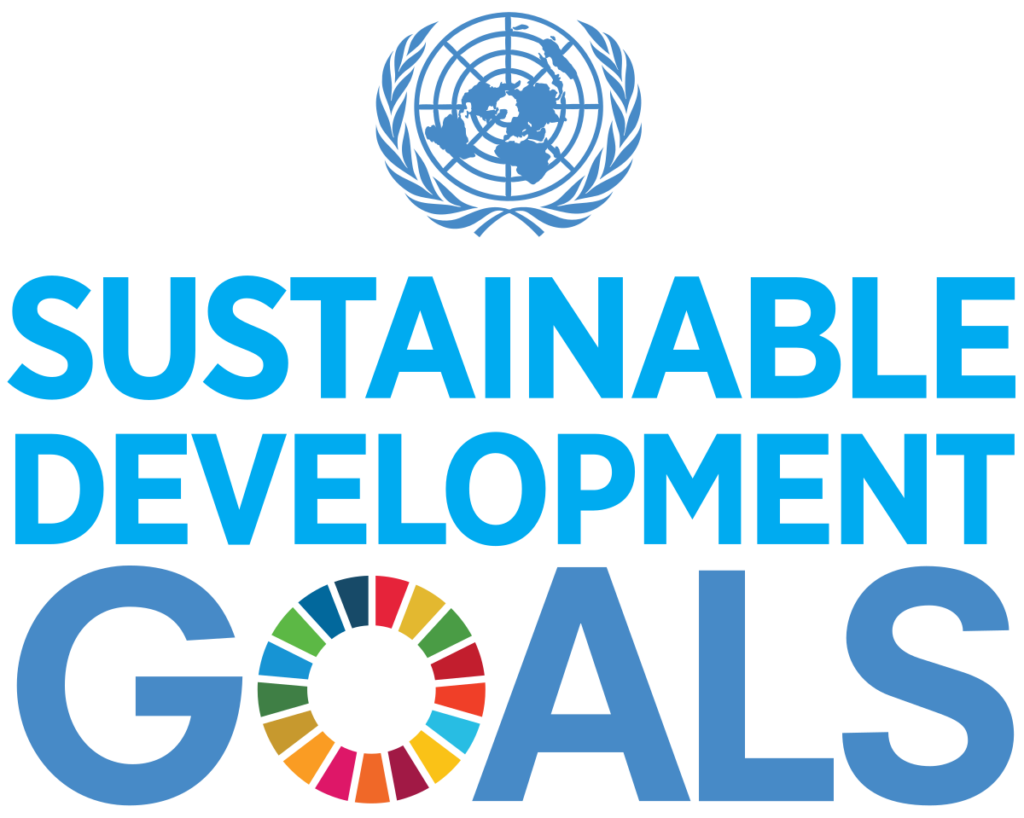SUSTAINABLE DEVELOPMENT GOALS

SDG 11: SUSTAINABLE CITIES AND COMMUNITIES
“Cities and communities must themselves be sustainable. More and more of the world’s population lives in urban centres, and this is often the home of our universities too. Cities can be places of great innovation and opportunity, but they can also be home to intense poverty and inequality. The interaction between universities and their communities, urban and rural, needs to be a positive one that can last for generations.”
(THE Impact Rankings)
Support of arts and heritage
IPB University provides public access to buildings, monuments, or natural heritage landscapes of cultural significance.
There are several natural heritage for agroedutourism objects at IPB University:
- IPB Baranangsiang Bogor Campus. Historically, the building was established in 1952, prior to the establishment of IPB in 1963;
- Gedung Pusat Studi Biofarmaka (Tropical Biofarmaka Research Center), was established in 1926;
- Asrama Sukasari was established before 1950
IPB Baranangsiang campus is one of Bogor’s cultural heritages because it has a history stored in it. In that building, the groundbreaking was carried out by the first president of Indonesia, Ir. Sukarno. At that time Ir. Sukarno emphasized the importance of agriculture to the Indonesian people as a matter of life or death.
Gunung Walat Educational Forest is one of the forests managed by the Faculty of Forestry and Environment of IPB since 1968 which was originally an enclave surrounded by villages and community gardens. Besides being used as an educational forest, Gunung Walat Forest is also a source of energy. community income around the forest. Gunung Walat Forest can be accessed by people who want to do research or studies related to nature

Gunung Walat Educational Forest
Agroedutorism in IPB University
Agricultural Education Tourism Development at IPB University
IPB University Library has a repository website that become the best repository in Southeast Asia that have public access. Its management is supported by the Information Communication Technology (ICT) of IPB University.
Access to IPB Library is free
IPB University Library services include membership, borrowing, returning books, information retrieval, user guidance, references, discussion rooms, internet services, SNI Corner, BI Corner, photocopy, and scanning. OPAC is available, a search tool that can be used to search for information. The Library lobby is provided for visitors to read books, and doing assignments, discussions, and exhibitions while maintaining order, security, and comfort. The number of visitors to the IPB University library is an average of 2 million visitors every month. Since 2019, IPB in collaboration with Bank Tabungan Negara (BTN) conducted the inauguration of the BTN Zone at the IPB Library, functioning as a reading room that is expected to give more benefits to visitors from academics and the public. IPB University Library also collaborates with sciencedirect.com and other publishers to provide digital access from home during the pandemic situation.
Remote Access to IPB Library Facility
IPB University provides public access to museums, exhibition spaces/galleries, and/or works of art and artifacts.
Museums and galleries at IPB University
IPB University has some museums, galleries, and works of art or artifact. As museums, IPB has an Insect Museum established in 2005 and organized by the Department of Plant Protection, Faculty of Agriculture. The Insect Museum introduces and provides knowledge about insect diversity, especially insect taxonomy, to school students, college students, and the public. This museum is open to the public for free.
New Green House With a Touch of Landscape Architecture at IPB University
Agroedutourism IPB University
IPB University also has some exhibition spaces/galleries in department/program study, such as the Gallery of Landscape Architecture which is located inside the Department of Landscape Architecture and free access during student exhibitions twice a semester. IPB Campus also has the same artifacts, since IPB Dramaga campus previously was a rubber plantation since Dutch colonialism.
As a public university, IPB University provides public access to open space and green space within the Darmaga campus, such as Campus Forest Park, Taman Konservasi, Academic Event Plaza (AEP) and Taman Inspirasi, Taman Integritas, Taman Inovasi, etc. IPB University also has blue open space (BOS) within the Darmaga Campus, such as LSI Lake (Situ Leutik), Situ Burung Lake in Cikarawang, Telaga Inspirasi, etc. The green open space (GOS) and blue open space (BOS) are open for public. Therefore, on the weekends, e.g. Saturday and Sunday, many visitors use it as a recreational object. Those visitors mostly came from communities surround IPB Campus Dramaga. Within 250 ha area, IPB University develops many GOS and BOS which are free access for public community.
Green Open Space (GOS)
Campus Forest Park. The establishment of a Campus Forest Park on the Dramaga Campus of IPB was marked by the issuance of the Rector’s (i.e., Chancellor Professor Aman Wirakartakusumah) Decree No. 086/Um/1995. It mandated its management to the Faculty of Forestry. The area designated by the decree is 12 hectares, and at that time, Mahogany (Swietenia sp) and Pinus (Pinus sp) have been planted as currently seen in the Cikabayan block area.
Sustainability Report Faculty of Forestry & Environment IPB University
Blue Open Space (BOS)
IPB University collaborates with Danone Indonesia through PT Nutricia Indonesia Sejahtera to inaugurate Taman Kehati (Telaga Inspirasi). This park is located on the Dramaga IPB Campus, Bogor. This collaboration aims to conserve endemic flora and fauna that are endangered as well as carry the mission of meeting the needs of healthy food and access to clean water for IPB University residents. Through this park, it is hoped that it can act as a center for education, inspiration and innovation for many parties.
IPB University and Danone Indonesia Inaugurate the Bogor Inspiration Lake Conservation Park
Inspiration Lake at IPB University which focuses on supporting food security
IPB University Inspirational Lake Conservation Park, Not Just Preserving Flora and Fauna
IPB University has many annual public performances, such as choirs, theatre, orchestra, sports, music, art exhibition, etc. Related to art and culture that play an important role in cultural preservation as well as providing space for the actualization of arts, especially for IPB academics: (1) Gebyar Nusantara, an annual event that presents IPB University students’ cultural diversity from all over Indonesia; (2) IPB University Student Choir, there are three groups, including the Student Choir (PSM), which consists of undergraduate students, D’Voice, which consists of IPB Vocational School students, and Agriaswara that have received many national and international achievements. Agriaswara raised the International Mission in Art and Culture (IMAC) on an International scale in dance and music; (3) The Sundanese Arts Circle (Lises) Gentra Kaheman, which is engaged in arts and culture, especially Sundanese arts and culture; and (4) Music Agriculture X-Pression (MAX) focuses on efforts to improve the art of music at IPB.
IPB’s student’s activities
IPB’s student’s performance
IPB University supports the preserve cultural heritage and traditions on Campus. Each year’s various activities are learning, preserving, and developing regional dances, songs, musical instruments, theater arts, folk tales, and traditional games.
IPB Science Techno Park
IPB managed parts of Taman Kencana, Bogor area by establishing IPB Science Techno Park. Historically, Taman Kencana area was among the Dutch colonial government heritage back since colonial era. Taman Kencana initially functioned as Dutch noblemen residents, with typical Dutch house architectures. To date, some buildings that have been standing since the Dutch colonial era are maintained and conserved, including parts of IPB Science Techno Park properties.
IPB Baranangsiang Campus
One of IPB campus locations is at IPB Baranangsiang Campus, Bogor, which is among Bogor region’s cultural heritage. Historically, the building which currently is functioned as IB Baranangsiang Campus was established in 1952, meanwhile, Institut Pertanian Bogor (Bogor Agricultural University, IPB) establishment was begun in 1963. The first stone lay-down of IPB Baranangsiang building was by the first President of Indonesia, Ir. Soekarno on April 27, 1952.
Gebyar Nusantara Festival 2022
Gebyar Nusantara is the Implementation of Cultural Love by IPB University Students. This year’s Genus event was attended by at least 25 regional student organizations (Omda) from various regions of the country. Genus is also an opportunity for Omda to introduce the culture of their respective regions.

Agriaswara IPB Annual Concert 2021
In 2021, Agria Swara IPB University Student Choir (PSM) held a concert that results of the rehearsals were presented in the form of a concert entitled “Asa: A New Beginning.” The meaning of this concert is hope and a new beginning for the choir to continue to develop and process even in difficult times.

Gentra Kaheman
IPB conserves the Sundanese–West Javanese native tribe–culture through Gentra Kaheman students organization. Gentra Kaheman is a student organization that focuses on IPB students’ interests and talents development in arts and cultures, especially Sundanese art and culture. Art and cultural variety are learned, conserved, and developed in form of local dances, songs and musical instruments, theatrical/drama arts that bring local folks’ lores, and traditional games.
Sustainable practices
IPB University has program Green Campus which are described in the IPB Green Campus Booklet. Green transportation and pedestrians implemented throughout 2015 to 2020 is one of four main activities carried out to achieve the goals of a green campus. The green transportation movement is carried out in the following stages: 1. Electric vehicles (approximately 711 people/day). 2. Bicycle use, in which IPB has 843 bicycle units with connectivity in the campus area, reaching 70% (around 78 units/day). 3. Development of pedestrian paths, with connectivity reaching 80% of the total campus area. Since 2017, IPB provided two pedestrian paths; 5. Development of a parking area for vehicles, which requires IPB members to cultivate walking habits, in addition to creating traffic order and security; 5. Use of gas-fueled buses, wherein 2017 IPB added five BBG units in collaboration with PT Sinarmas. The natural gas-fired IPB buses are used daily by around 1,918 people/day.”
Promote sustainable commuting
IPB University undertakes actions to promote more sustainable commuting by the provision of free buses or shared transport schemes, provision of bicycle parking & storage facilities, provision of cycle tracks, a bicycle and pedestrian plan or policy, bicycle sharing program, free or reduced price transit passes, car/vanpool or ride sharing program, reduced parking fees or preferential parking for carpool or vanpool users, car sharing program, provision of electric vehicle recharging stations, preferred parking for fuel-efficient vehicles.
Free or subsidized buses or shared transport schemes :
Provision of Free Buses

Cycle tracks, bicycle sharing program, and pedestrian:
Provision of Pedestrian paths and bicycle lanes

Provision of free bicycle rental


Provision of Electric Car Transportation


Electric vehicle recharging stations


IPB promotes or allows remote working for employees to reduce employee commuting as stated in IPB Official Letter No. 6494/IT3/KP/2020 concerning Employee Work System during New Normal Era.
IPB University has also implemented a picket (shifting) schedule. There are shifts, some are Work From Home (WFH) and some are Work From Office (WFO). Some jobs are communicated via e-letter, digisign and social media, this can reduce the use of paper materials, photocopies, printed materials and others. Important meetings, even lectures and practicums, are also held online. This significantly reduces energy use, not only for transportation fuel, but there has been a reduction or energy savings in lighting, air conditioning, elevators, gas and water use.
In addition, IPB University also promote online learning system through blended methods which is reducing of classroom utilization and transportation for lecturer and students for coming to campus. The blended learning is delivered trough Moodle Platform & Zoom Online Meeting Application.
As an educational institution, IPB University pays attention to the housing needs of its lecturers and employees. This commitment is shown by the availability of 106 housing units for lecturers inside our campus, with the total area 7,041,610 m2. In addition, IPB University also provides a unit of lecturer dormitory on Jl Veteran No 60 Bogor; on Jl Kartini Bogor; and around IPB Baranangsiang Campus, Jl Andi Hakim Nasoetion Bogor. For every lecturer and employee who is in need, IPB University gave a permit for the employees and lecturers to use this housing.
IPB provides affordable dormitories for students inside the campus area. IPB University has 10 building dormitories, which include 4 male student dormitory blocks and 6 female student dormitory blocks. For first-year students, the existence of dormitory greatly facilitates access to the location of classes and practical work, namely the Common Classroom (CCR) and Teaching Laboratory which is very close to the location of the dorm. Facilities available at the dormitory include 7 x 24-hour security, study room, lobby, free WIFI, dormitory canteen, and assistance from Senior Resident (SR).
IPB also provides leadership dormitories, provided by sophomore students onwards with the aim of helping students find affordable housing.


IPB provides pedestrian paths in entire campus area, and new pedestrian tracks are provided around strategics and high mobility location. Pedestrian paths also provides additional facilities such as special blocks for persons with disabilities. IPB also invites all civitas to take a walk to support the green campus program.

IPB University works closely with local and national governments to address planning issues/development, including ensuring that local residents are able to access affordable housing. In collaboration with Perumnas and Ministry of General Affairs, IPB University provides affordable housing to local communities surrounding the campus area.
Perumnas with IPB University Collaborate to Provide 160 Cheap Houses for Employees
Perumnas Collaborates with IPB to Provide Housing for Educators
IPB University also works with Public Service Agency (BLU) Center for Housing Financing Fund Management (PPDPP) Ministry of Public Works and Public Housing (PUPR) to study and analyze the social and economic impacts of distributing program funds for the Housing Financing Liquidity Facility (FLPP) on Low-Income Communities (MBR) through Banks and Developers. Program funds for the Housing Financing Liquidity Facility (FLPP) help people with Low-Income Communities to addres the problem of housing.
IPB University applies sustainable building standards toward a green campus. In collaboration with the Green Building Council Indonesia (GBCI), IPB has prepared old and new buildings based on environmentally friendly, low carbon, and producing oxygen.
Succeeding Green Campus IPB University Partners with Green Building Council
In 2021, IPB University officially inaugurated the Delta Building in Vocational School. Delta building is ex-biochemistry building which was renovated by the University to become a modern agricultural storefront. IPB now try to renovate the building to become urban agriculture complex. We named it Alpha Building, CB Building (Beta), CC Building (Gama), DD Building (Delta), Epsilon Building, Zeta Building and later when many more can reach omega.
IPB University also has a new building on brownfield land, AM. Satari Building. AM. Satari Building applies an environmentally friendly concept with the principle of green building. The building is also supported by facilities and designs that support energy efficiency. AM. Satari building has a water harvesting system that supports water needs in one building.

SDG 11 IN NUMBER
Rp 1,141,955,802,271
University expenditure
Rp 1,283,462,650
Expenditure spent on supporting arts and heritage
0.11
Percentage of spend on Arts & Heritage
RELATED NEWS
It seems we can't find what you're looking for.

